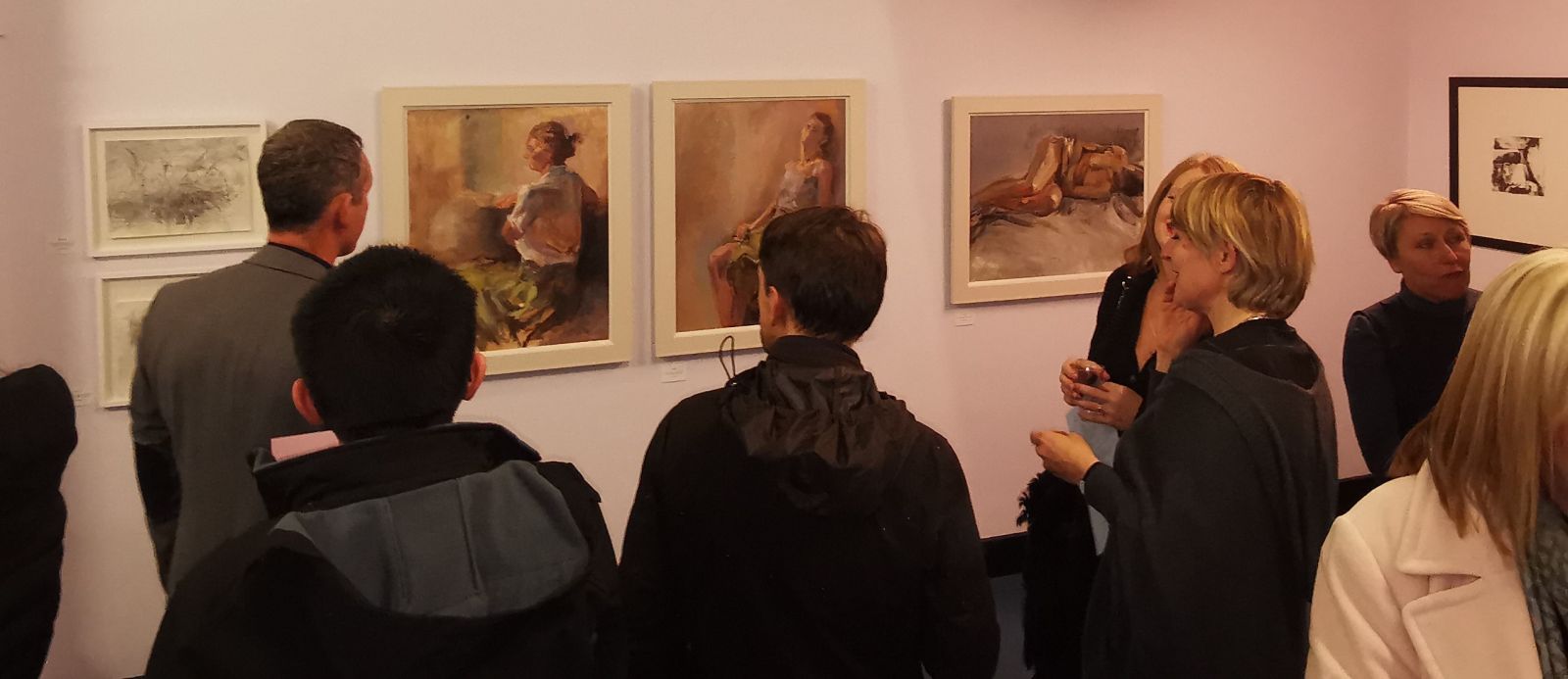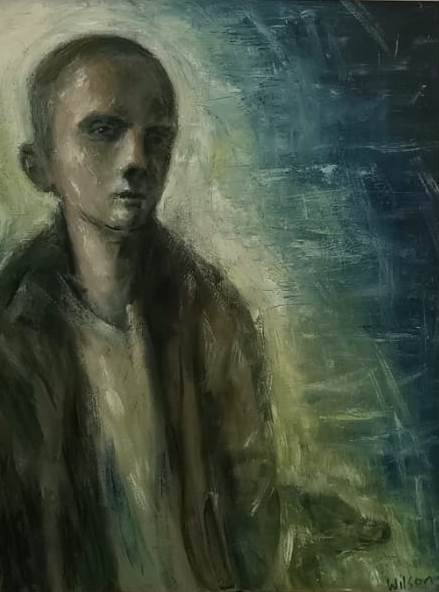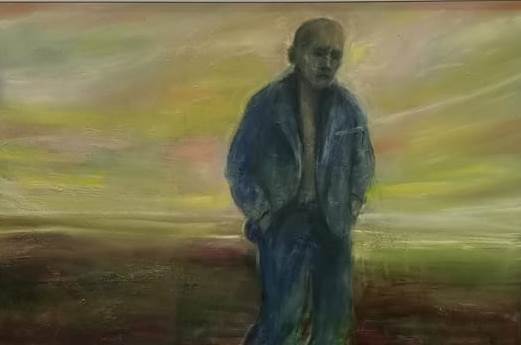Wilson, Alan - Alan Wilson
Miracles and Parables
by Alan Wilson
Alan Wilson writes from a Scottish perspective about Christian faith and contemporary art. He also sheds light on an exhibition with well-known Scottish artists of faith that he has just curated. He asks:
Can there be a renewal of Christian tradition in Scottish art, where ambitious artists create from a heartfelt faith, committed to their Lord and saviour as well as their craft?
James Elkins wrote an important book with the title On the Strange Place of Religion in Contemporary Art which analyses how religion and serious art have parted ways in contemporary culture. In terms of the Christian religion this is undeniably the case; there is a disconnect between belief and artistic imagination in the art world. Religious themes are certainly still tackled along with spiritual ones but invariably from an attitude of post-modern irony and cynicism. Being transgressive with the aim of debunking and dismantling the tenets of the Christian faith is the accepted modus operandi in official art circles. Of course, being critical of the Church does not necessarily mean being anti-religious and the arts can effectively highlight corruption, such as the Oscar winning film Spotlight. Nevertheless, it is difficult to find art in our secular era that does not express discontent when dealing with Christianity and actually communicates faith. This has not always been so.

William McTaggart: The Coming of Saint Columba, 1895
Any careful historical reflection would offer a different perspective on the relationship between Christianity and art and show that there has been a most fruitful one with a wide variety of Christian communities engaged in artistic practice. Just by walking through the Edinburgh National Gallery one becomes aware of this wonderful dialogue between belief and picture-making. There are Botticelli, Tintoretto, El Greco, Lucas Cranach to name but a few. Even Titian’s sublime Three Ages of Man is distinctively Christian and MacTaggart celebrates The coming of Saint Columba in his magnificent seascape: Why would he have done that without any conviction? As a son of the manse I think his Columba painting is an artistic confession of faith: he is surely celebrating the arrival of Christianity upon Scottish shores through his magnificent painting.

Peter Howson: Judas, 2002.
It is within this faith tradition that I have curated “Miracles and Parables”, partly inspired by something my old art school friend Peter Howson said to me about ten years ago: “I intend to revive Christian Art. What do you think?!” More recently when meeting and talking to Jolomo after he spoke at our school’s prize-giving, I discovered he had painted specifically religious pictures. He told me he had never exhibited them before. I had a look and thought, these should be seen. Both these established artists paint from a standpoint of belief with no intention of dismantling orthodoxy. In fact, they confirm the great doctrines of the faith.

When it comes to the supernatural such as Christ’s deity, the miracles, the resurrection, they are affirmative, and we sense this affirmation in their work. This is also true of the other artists I have included, I D Campbell, Jane Roy and Rebecca Fraser. Campbell is a figurative artist with conviction. His style is one of realism, yet his vision is never for mundane copying: his imagery positively feeds off the supernaturalism of the gospels. Jane Roy is a sensual painter where the very act of painting is an adventure into the process. Her imagery is intimate, and her mark-making always feels “spiritually” inspired. Fraser who is the youngest is a printmaker and most post-modernist out of the group. Her lines are crisp and clean with the deliberate elimination of expressiveness so that the images become signs of a symbolic theological order. She is relatively cool in her approach, but her style of illustration evokes the post-war period of advertising which only suffuses her imagery with a quiet warmth.
My late friend, the poet Bobi Jones wrote extensively about the “praise tradition” in Welsh poetry. Can there be a renewal of such a tradition in Scottish art, where ambitious artists create from a heartfelt faith, committed to their Lord and saviour as well as their craft? This is what Peter Howson envisioned and I hope this exhibition sows some of that vision’s seed.
Alan Wilson's comments after the opening of the exhibition:
The opening night of Miracles and Parables went well and we had over 200 attending. In my talk I introduced some ideas about Christian art and how I understand it. I opened with the idea that all artists are border-stalkers and imagine a world beyond, another realm from the here and now. And yet, Christians are not Gnostics we are creationists and incarnationists. Ideas are embodied in pigment and physical stuff. The physical is the conduit of the spiritual. It is always form AND content interwoven like a marriage, becoming one flesh so to speak. Figurative art is certainly not “art for art’s sake” as old Jimmy Whistler would proclaim (even his own painting was not without content). Great art isn’t sentimental either and that has been the pitfall of so much Christian art dealing explicitly in Biblical themes. We find fake feelings of worship and fake feelings of intimacy with God resulting in kitsch. Sin often gets trivialised and fear and shame get filtered out or turned into comic-book emotionalism. We dare not domesticate our spiritual feelings and experiences as Christian artists or it will just not communicate at any level of depth.
 |
 |
Two works by Alan Wilson
There is a wonderful bit in the film Walk The Line where Sam Philips stops Johnny Cash singing a sentimental gospel song and tells the offended Cash it is because, “I don’t believe you!” Genuine Christian art will “deepen the mystery” as Francis Bacon said and “plow and harrow the soul” as Tarkovsky said. Was Jesus not doing that with his miracles and parables? There has to be something real going on because Sam Philip’s challenge is applicable to every artist. It is THE challenge.
Hopefully the artists in the exhibition have faced up to it. I believe they have. Will their art ring true and will the viewer sense truth embodied within it? I asked the people attending on the night to ask that very question! We aren’t in the business of painting theories or even religious doctrine. However, I do believe what Patrick Kavanagh said about any poet who is worth his salt being a theologian! By that he meant that artists should be in the business of dealing with questions of meaning and of context, the context of our lives and that has to be bigger than the merely personal, even though it is deeply personal.
Another Irish poet Michael O’Siahail believes artists are “minsters of meaning.” They should ask big questions about why we are here and what are we doing. This is what the miracles and the parables in the gospels do. The parables are fiction and like short stories could be translated into films. All six artists have translated them into drawings, paintings or prints and not always as you’d expect. Just take Rebecca Fraser’s triptych titled Three Days. It depicts the Friday, Saturday and Sunday of Christ’s passion and resurrection from scenes she drew in a funeral parlour and mortuary that she actually visited. Artists work like that; they like to “tell it slant.” Telling it slant is what makes it art.


